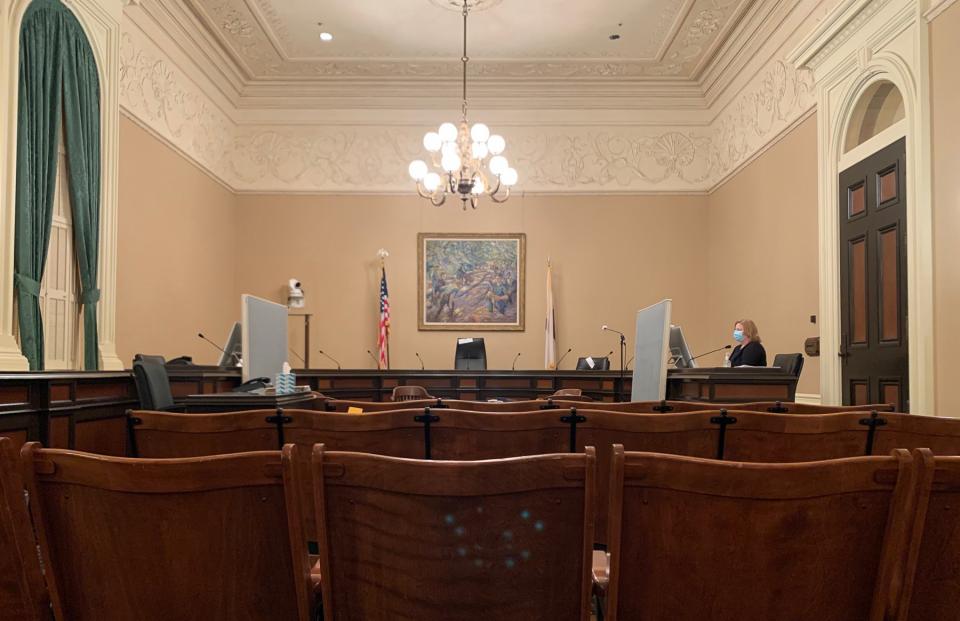The governor and the Legislature know the COVID-19 pandemic has blown a huge hole in the state budget, but they can’t easily project state revenues or the impact on Proposition 98 — the mechanism that provides K-12 schools and community colleges about 40 percent of the state’s General Fund.
There are several reasons for this. The traditional tax filing deadline is April 15, but the state and federal governments pushed back the deadline to July 15 to provide individuals and businesses some fiscal relief. That leaves the state not knowing exactly how much revenue to expect for the 2020-21 budget.
In light of this unprecedented circumstance, the chair of the Assembly Budget Committee, Phil Ting, D-San Francisco, issued a memo outlined changes to this year’s budget process. In his April 6 memo, Ting said he expects the governor’s May Revision, set for release on May 14, to be a “workload budget.”
A workload budget covers only current authorized services and maintains baseline levels of funding. In other words, it is “bare bones.” It’s highly likely that, for the first time in memory, the May revise budget will be significantly less than the governor’s proposed budget in January.
In addition, Ting says that when the Assembly reconvenes it will not consider new legislative priorities from advocates (such as the CFT), stakeholders, or legislators. The three exceptions are budget items that address COVID-19-related costs, wildfire prevention, and homelessness funding. “Subcommittees will be directed to only agendize items necessary to build this baseline budget or items providing direct oversight of disaster response and recovery spending,” Ting said.
- Assemblymember Ting's memo – April 6
- CFT’s revised budget request to the state Legislature – April 17
Once Gov. Newsom and the Legislature have projected state revenues — in late July or early August — they will adjust the budget. Assemblyman Ting predicts that “given the initial projections of the virus’s impact on the economy, it is possible the state will need to consider sizable ongoing reductions to major programs.”
The Senate Budget and Fiscal Review Committee convened a special coronavirus hearing on April 16 in Sacramento. And on April 20, the Assembly Budget Subcommittee #6 (Budget Process, Oversight and Program Evaluation) met. Both hearings focused primarily on the current response to the COVID-19 pandemic and fiscal oversight of the more than $1 billion in emergency legislation passed in March before the Legislature went on recess due to the coronavirus outbreak.
Most education budget subcommittee hearings have been postponed or canceled, except Assembly Subcommittee #2, which met on April 28 for an informational hearing and discussed the following topics:
- COVID-19: Implications for K-12 School Finances, Accountability and Safety
- K-12 School Closures: How Can California Mitigate Learning Loss?
- COVID-19 Childcare and Essential Workers
Department of Finance and Legislative Analyst’s Office release dire forecasts
As the Newsom administration prepares its May Revision, the Department of Finance and the Legislative Analyst’s Office each released their forecasts last week.
On May 7, the Department of Finance fiscal update states, “COVID-19 has caused a national recession, a precipitous decline in income, rapidly rising health and human services caseloads and substantial COVID-19 driven costs.” The DOF projects that California faces an overall budget shortfall of approximately $54.3 billion, of which $13.4 billion occurs in the current budget year (2019-20) and $40.9 billion occurs in the 2020-21 budget year.
The DOF projections are based on a $41.2 billion decline in revenue, a $7.1 billion increase in caseloads supporting health and human services programs and an increased expenditure for additional COVID-19 responses. Although the state has approximately $16 billion in the Rainy Day Fund, the projected budget deficit is nearly three-and-one-half times this amount.
The following day, the nonpartisan Legislative Analyst’s Office released its budget projections based upon two economic scenarios — a more optimistic “U-shaped” recession and a more pessimistic “L-shaped” recession.
In the “U-shaped” scenario, the economy would recover quickly after bottoming out during the current stay-at-home orders, and the LAO projects the state would need to address an $18 billion deficit. In the “L-shaped” scenario, the economy would continue to be negatively affected for an undetermined time period — presumably several years. In that scenario, the LAO projects the state would need to address a $31 billion deficit.
The LAO predicts that the “fiscal challenges are unlikely to dissipate quickly and will extend well beyond the end of the public health crisis.” It anticipates that under both recession scenarios budget deficits will continue until at least 2023-24. Over that time period, deficits could reach $64 billion in a “U-shaped” recession scenario and upwards of $126 billion in an “L-shaped” scenario.
The forecasts from the two agencies vary greatly, in part because the LAO uses current expenditure levels (baseline budget numbers), and the DOF uses numbers from the governor’s January budget proposal. Both, however, predict massive budget deficits over an extended period of time.
The CFT and the Education Coalition are lobbying the state Legislature and the governor to at least maintain current education funding levels for K-12, community colleges and the University of California, and asking the federal government for assistance with one-time COVID-19 related costs, such as for PPE, personal protective equipment.
The CFT is joining with the AFT and Gov. Newsom to call for a $1 trillion nationwide stimulus package in a CARES Act 2.0. The proposed package includes a $1 trillion injection of federal dollars including billions for public education and for state and local governments, which is what California and other states will need to keep essential services going and to begin the road to recovery.
— By CFT Staff



